
The Renville Agreement was a United Nations Security Council-brokered political accord between the Netherlands, which was seeking to re-establish its colony in Southeast Asia, and Indonesian Republicans seeking Indonesian independence during the Indonesian National Revolution. Ratified on 17 January 1948, the agreement was an unsuccessful attempt to resolve the disputes that arose following the 1946 Linggadjati Agreement. It recognised a cease-fire along the Status Quo Line or so-called "Van Mook Line", an artificial line that connected the most advanced Dutch positions.

The Prime Minister of the Republic of Indonesia was a political office in Indonesia which existed from 1945 until 1966. During this period, the prime minister was in charge of the Cabinet of Indonesia, one of the three branches of government along with the People's Representative Council and the president. Following his 1959 decree, President Sukarno assumed the role and powers of prime minister until his resignation in 1966.
The 1949 Federal Constitution of the United States of Indonesia replaced the 1945 Constitution of Indonesia when sovereignty was officially transferred from the Netherlands to Indonesia following the Dutch-Indonesian Round Table Conference. It came into force on 27 December 1949 and was replaced by the Provisional Constitution of 1950 on 17 August 1950.

Eliza Urbanus Pupella, or E.U. Pupella was an Indonesian journalist and nationalist leader from the island of Ambon during the Japanese occupation of the Dutch East Indies that preceded the Indonesian National Revolution and the country's independence. A Christian, Pupella led the nationalist Ambonese League since 1938. During the Japanese occupation, he was appointed as head of the new administration on the island due to the internment of Dutch personnel for the duration of the war.

The State of East Indonesia was a post–World War II state formed in the eastern half of Dutch East Indies. Established in December 1946, it became part of the United States of Indonesia (USI) in 1949 at the end of the Indonesian National Revolution, and was dissolved in 1950 with the end of the USI. It comprised all the islands to the east of Borneo and of Java.

Ide Anak Agung Gde Agung, alternatively spelled too as Ida Anak Agung Gde Agung, was an Indonesian ethnic-Balinese politician, historian, and National Hero, who was the Raja of Gianyar, Bali, and served as the prime minister of the State of East Indonesia from 1947 to 1949, and the Foreign Affairs Minister of Indonesia from 1955 until 1956.

The Central Indonesian National Committee, also known as the Central National Committee, was a body appointed to assist the president of the newly independent Indonesia. Originally purely advisory, it later gained assumed legislative functions. The Working Committee of the KNIP became part of the People's Representative Council when Indonesia became a unitary state in 1950.

The Republic of the United States of Indonesia Cabinet was established as a result of the formation of the United States of Indonesia following the transfer of sovereignty from the Dutch colonial power. It lasted less than a year before Indonesia became a unitary state.

The First Sjahrir Cabinet was the second Indonesian cabinet, named after the prime minister. It served from November 1945 to March 1946.
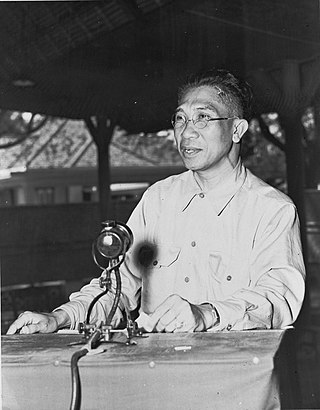
Tjokorda Gde Raka Soekawati, was the only President of the State of East Indonesia from 1946 to its disestablishment in 1950. He served from 1946 until the dissolution of the East Indonesian State in 1950. His title, Tjokorda Gde, signaled that Soekawati belonged to the highest ksatria. He had two wives, the first a Balinese, Gusti Agung Niang Putu, who gave him a son named Tjokorda Ngurah Wim Sukawati. In 1933, he married a French woman named Gilbert Vincent, who gave him two children.

The Federal Consultative Assembly, (BFO) was a committee established on 8 July 1948 to discuss the form of the planned federal United States of Indonesia. Its membership comprised the leaders of the various federal states established by the Dutch in the areas they occupied following their attack on the areas of Indonesia controlled by republican forces during the Indonesian National Revolution (1945–1949). It took part in negotiations with the Dutch in August and September 1948, and participated in the Dutch–Indonesian Round Table Conference at which the Dutch agreed to hand over sovereignty to the United States of Indonesia.
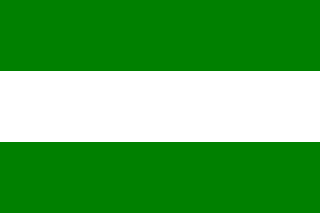
The State of Pasundan was a federal state (negara bagian) formed in the western part of the Indonesian island of Java by the Netherlands in 1948 following the Linggadjati Agreement. It was similar to the geographical area now encompassed by the current provinces of West Java, Banten and Jakarta.

The United States of Indonesia was a short-lived federal state to which the Netherlands formally transferred sovereignty of the Dutch East Indies on 27 December 1949 following the Dutch–Indonesian Round Table Conference. This transfer ended the four-year conflict between Indonesian nationalists and the Netherlands for control of Indonesia. It lasted less than a year, before being replaced by the unitary Republic of Indonesia.

The Denpasar Conference was held from 7–24 December 1946 at the Hotel Bali, Denpasar and resulted in the establishment of the State of East Indonesia, part of the United States of Indonesia.

Tadjuddin Noor was an Indonesian politician and nationalist. He was a deputy speaker of the Provisional People's Representative Council between 1950 and 1956, and chaired the legislature of the State of East Indonesia (NIT).
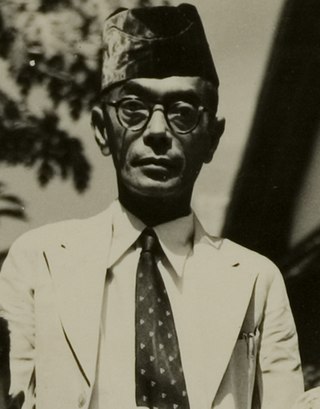
Muhammad Kaharuddin III was an Indonesian politician and royal who was the 16th Sultan of Sumbawa, a senator of the United States of Indonesia, and the regent of Sumbawa Regency between 1959 and 1960. He was also active in the politics of the State of East Indonesia, where he chaired its legislature between 1947 and its dissolution in 1950.

Nadjamuddin Daeng Malewa was an East Indonesian politician and bureaucrat who served as the first prime minister of the State of East Indonesia from January to September 1947. Prior to becoming prime minister, he briefly served as mayor of Makassar from August to September 1945 and was active in the Indonesian nationalist movement.

Semuel Jusof Warouw was an Indonesian physician who served as Prime Minister of the State of East Indonesia briefly in 1947, in addition to being Minister of Health within NIT between 1947 and 1949.
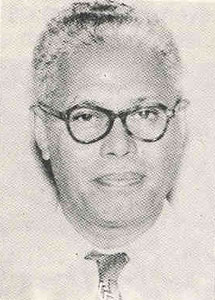
Martinus Putuhena was an Indonesian engineer and politician. He was the Minister of Public Works under Sutan Sjahrir during the Indonesian National Revolution, and briefly served as the Prime Minister for the State of East Indonesia prior to its dissolution.
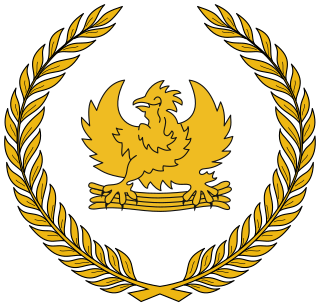
The Provisional Representative Body of East Indonesia was the lower house of the legislature of the State of East Indonesia, a constituent of the United States of Indonesia. It was formed at the Denpasar Conference in 1946, and dissolved in 1950.
















































